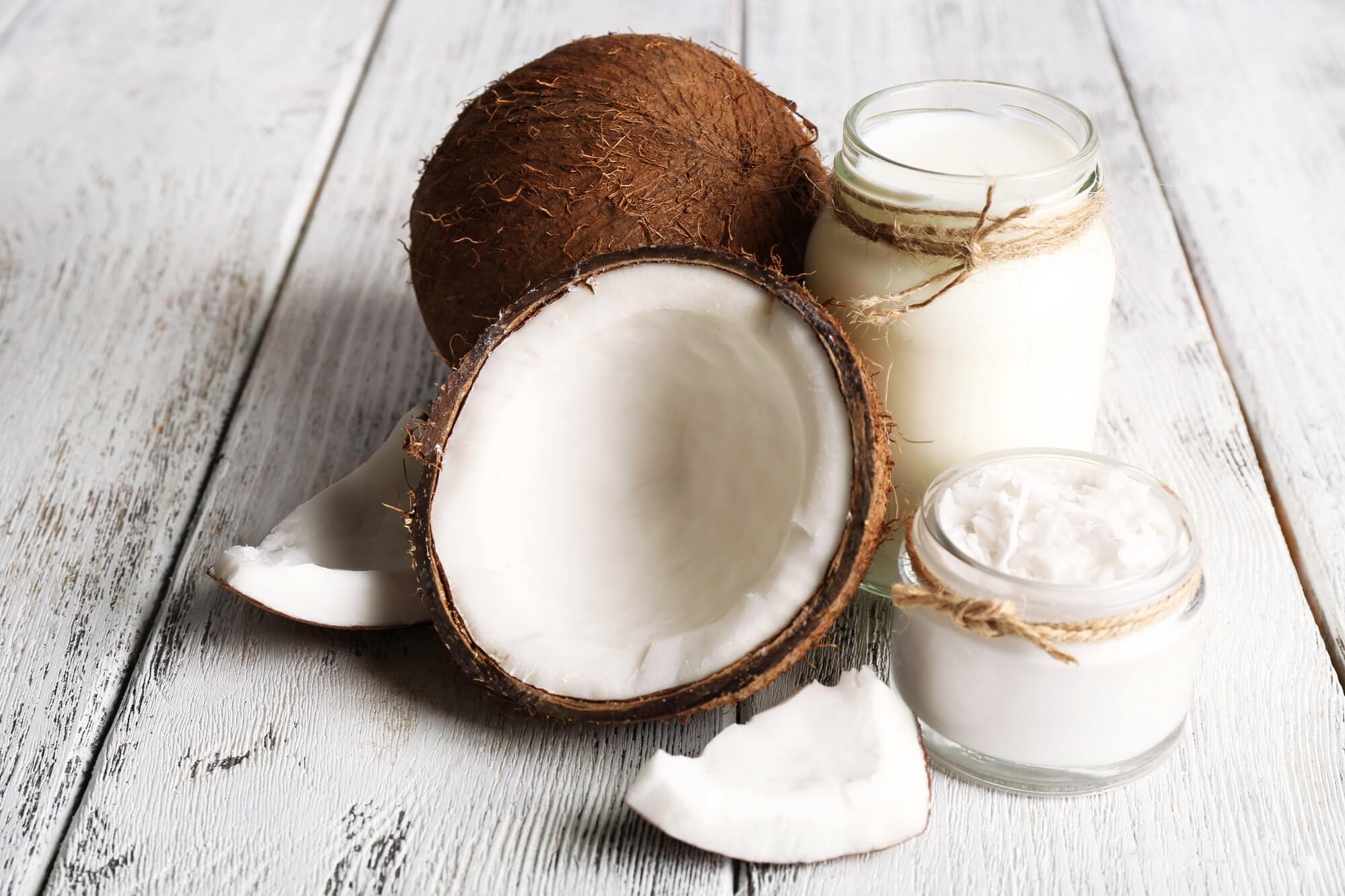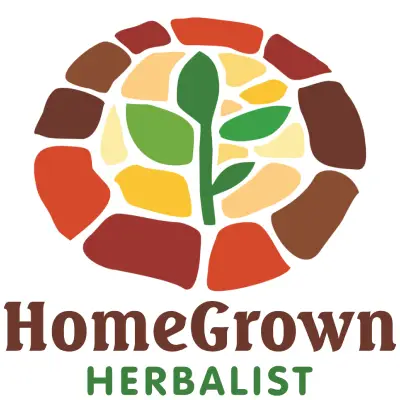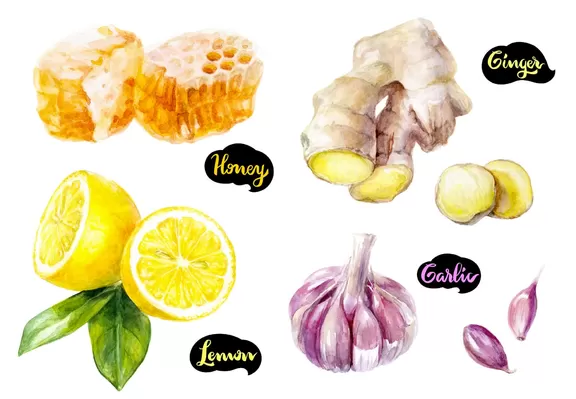
Garlic is a capable antifungal herb; and it can be used to treat a wide variety of fungal infections. Yeast infections, ringworm (tinea infections), and nail fungal infections can usually benefit from garlic. And, there are a lot of scientific studies that show garlic inhibits or kills many of the fungal pathogens behind these diseases.
So if you have a fungal infection, chances are, garlic is going to help treat it. But you should know that one key reason garlic is antifungal is the chemical allicin. There has been a lot of study done on allicin, and it has proven therapeutic value.
Yet, garlic needs to be crushed before allicin will be produced. Garlic contains alliin and the enzyme alliinase; when these two natural chemicals combine (via crushing / blending), allicin is formed.
Allicin won’t form in your stomach though; and it is easy to assume this might happen. The gastric acid of the stomach inactivates the enzyme alliinase. Thus, no chemical reaction forming allicin will occur when you eat it.
You should also know that allicin has a short life; it breaks down rapidly. Allicin created from fresh garlic cloves that are crushed has a chemical half life of about 11 days. The biological halflife; i.e., the duration of time the chemical’s impact an organism will be reduced by half; is about 6 days.(source 1)
Stay Safe with Garlic on the Skin
You may be thinking about using crushed garlic on the skin. But, you may want to limit how much you do this. Crushed garlic is quite caustic, and it will cause severe burns if you use it too much or for too long. This is a good caveat to keep in mind when you use crushed garlic on the body—especially on sensitive skin.
You may want to dilute your garlic in an antifungal medium like coconut oil. As the research we will discuss shows, you don’t need too strong of a concentration of garlic to see antifungal effects.
Also, make sure you stop using garlic if you feel discomfort. Garlic is powerful, and needs to be respected. It can give you a nasty burn if you use it incorrectly!
Dr. John Herzog (MD)
Dr. John Herzog, a "survival surgeon" from Maine explains what home remedies work best in a crisis situation.
This may be important in the event you require first-aid or are in an emergency situation without easy access to a hospital. Dr. John Herzog has assembled a large collection of home remedies for such scenarios.

Garlic’s Affects Against Dermatophytes

Dermatophytes, to operationalize this term, are fungal pathogens (denoted by the ‘phytes’) that cause diseases of the skin (denoted by the ‘dermato’). Dermatophytes grow with long tendrils and form molds.
Dermatophytes are the most common cause of fungal infections in the world; but, of course, there are many different types of infections these fungi cause. It is estimated that 10% to 15% of the global population will have a dermatophyte infection at some point in their lives. The fungi that cause these infections are known as tineas or ringworms. The genera (plural of genus) of fungi that cause these infections are Epidermophyton, Microsporum, and Trichophyton.(source 2)
And, yes, dermatophytes are contagious. These fungi can be spread by direct contact with an infected person or animal or by contact with a contaminated object.(source 2)
Nail Fungus & using Garlic to Treat it
Fungal infections of the fingernails and toenails can prove difficult to cure with drug treatment. Thus, having a efficacious alternative treatment would be a boon for those with this condition.
A 1998 study, published in Clinical Microbiology Reviews,(source 3) discussed the fungi that cause this condition. According to the study, there are four types of onychomycosis (the medical term for nail fungus); these are identified based on the location and the pattern of the infection. Dermatophyte fungi are the primary cause, yet yeasts like Candida albicans and nondermatophyte molds can also cause this condition.
The most prevalent cause of nail fungus and Athlete’s foot (tinea pedis) is Trichophyton rubrum (T. rubrum). The fungal species that cause the most nail infections in North America and parts of Europe are T. rubrum, Trichophyton mentagrophytes (T. mentagrophytes), and to much lesser extent Epidermophyton floccosum (E. floccosum).(source 3)

Comprehensive Herbalist School
Dr. Patrick Jones, founder of the HomeGrown Herbalist School of Botanical Medicine has been a practicing veterinarian for over 25 years. He is also a clinical herbalist and traditional naturopath.
Kevin Harrington, Original Shark from ABC’s Shark Tank, stands behind Dr. Patrick Jones and HomeGrown Herbalist.
Learn More
Comprehensive Herbalist School
Dr. Patrick Jones, founder of the HomeGrown Herbalist School of Botanical Medicine has been a practicing veterinarian for over 25 years. He is also a clinical herbalist and traditional naturopath.
Kevin Harrington, Original Shark from ABC’s Shark Tank, stands behind Dr. Patrick Jones and HomeGrown Herbalist.Learn More
A study, published in the International Journal of Dermatology [34.4 (1995): 278-279],(source 4) investigated how garlic would affect 88 clinical isolates of dermatophytes. Among these isolates tested were the three primary fungi responsible for onychomycosis: T. rubrum (6 isolates), T. mentagrophytes (5 isolates), and E. floccosum (2 isolates).
The diagnostic method employed was to find the minimum inhibitory concentration (MIC: i.e., the lowest concentration that arrests the growth / inhibits) of the garlic extract against the fungi. The study defined the MIC as the lowest concentration of the extract that stopped all macroscopic (visible to the naked eye) growth after 7 days.
The garlic extract used in the study was prepared from peeled garlic cloves. The cloves were blended with distilled water for 10 minutes. The slurry was centrifuged and the supernatant fluid (the fluid that settled on top) was filtered. Thus, there was allicin formed as the garlic was thoroughly blended.
The MIC’s for the relevant tested fungi were as follows:
- T. rubrum: 1 isolate had an MIC of 0.5% (1:200 dilution), 5 isolates had an MIC of 0.667% (1:150 dilution). A total of 6 isolates were tested.
- T. mentagrophytes: 1 isolate had an MIC of 0.5% (1:200 dilution), 3 isolates had an MIC of 0.667% (1:150 dilution), and 1 isolate had an MIC of 1% (1:100 dilution). A total of 5 isolates were tested.
- E. floccosum: all two isolates tested had an MIC of 0.667% (1:150 dilution).
Another study, that examined how garlic would affect Meyerozyma guilliermondii and Rhodotorula mucilaginosa, was published in the journal Molecules [24.21 (2019): 3958].(source 5) These two yeasts were isolated from a person with a nail fungus infection.
This study found that at the MIC concentration of 120 mg/ml severe structural alterations occurred to the yeasts along with cell death. The anti-inflammatory properties of garlic were also analyzed by the research, and compared with those of the anti-inflammatory drug diclofenac. The study found that garlic was as capable an anti-inflammatory as the drug diclofenac.
This 2019 study in Molecules came to the following conclusion about garlic and nail fungal infections (onychomycosis):
In conclusion, the garlic extract had antifungal effects against M. guilliermondii and R. mucilaginosa, and antioxidant effect in turpentine-induced inflammation. Together, the antifungal and antioxidant activities support that A. sativum is a potential alternative treatment in onychomycosis...
...Considering that local or systemic inflammation may associate to onychomycosis, and oxidative stress is an injury mechanism in inflammation, A. sativum extracts antioxidant activity may recommend this product for local or systemic anti-inflammatory therapy in onychomycosis.
Molecules [24.21 (2019): 3958]
Claire Goodall’s Amazing Guide
Clair Goodall is a bee-obsessed, natural medicine convert from Minnesota (USA). And, she does keep bees!
Clair has created 350+ page book documenting how to replace the toxic products and medications in your home with healthier, all-natural alternatives.

Garlic as a Natural Ringworm Treatment
Ringworm is another name for ‘tinea’ infections. And, a tinea infection is a fungal infection. Since tinea happens to the skin via a fungi, the fungi that cause tinea are dermatophytes. The names of these various tinea infections are derived from where they happen on the body. Yet, I think it is safe to say that tinea infections of the scalp and body are probably most commonly referred to as ringworm. The different types of ringworm or tinea infections are:
- Athlete’s foot: fungal infections of the feet are known as tinea pedis.
- Jock Itch: genital area, inner thighs, and buttocks fungal infections are known as tinea cruris.
- Scalp ringworm: this is a fungal infection of the head, and is known as tinea capitis. It is quite contagious but rare in adults.
- Body ringworm: a fungal infection of the body’s skin or face; this is known as tinea corporis. It commonly occurs in the skin folds, and is more prevalent in warmer climates.
The Fungal Species that Cause Tinea Infections
Athelete’s Foot (tinea pedis):
According to U.S. National Library of Medicine’s StatPearls publication on tinea pedis,(source 7) this infection is caused by dermatophytes. Primarily, Trichophyton rubrum (T. rubrum) causes this condition; accounting for about 70% of all incidences. Trichophyton interdigitale and Epidermophyton floccosum can also play a role in athlete’s foot.
Scalp Ringworm (tinea capitis):
According to U.S. National Library of Medicine’s StatPearls publication on tinea capitis,(source 8) this infection is caused by dermatophytes. Scalp ringworm is primarily caused by species in either the Microsporum or Trichophyton genera. In children, Trichophyton will affect both boys and girls equally; yet, Microsporum canis causes more infection in boys. This is relevant as scalp ringworm happens to children more than adults.
Jock Itch (tinea cruris):
According to U.S. National Library of Medicine’s StatPearls publication on tinea cruris,(source 9) this infection is caused by dermatophytes. The species of fungi that cause this condition belong to three different genera: Trichophyton, Epidermophyton, and Microsporum. T. rubrum is the most often found cause of jock itch; and, this fungus is the most common cause of this condition in the world.
Body Ringworm (tinea corporis):
According to U.S. National Library of Medicine’s StatPearls publication on tinea cruris,(source 10) this infection is caused by dermatophytes. Again; the same genera, Trichophyton, Epidermophyton, and Microsporum; cause these infections. StatPearls states that T. rubrum is a causative factor 80 to 90% of the time.
Does Garlic Fight Trichophyton rubrum?

According to the research, it appears that T. rubrum may be the most prevalent cause of ringworm. So let’s take a look at how garlic affects this ubiquitous cause of ringworm infections.
The first study we will look at, regarding this question, was published in the Iranian Journal of Basic Medical Sciences [17.3 (2014): 150].(source 11) A water based garlic extract and pure allicin were individually tested on T. rubrum. The concentration of the garlic extract was 4 mg/ml, and the concentration of allicin was 12.5 µg/ml (micrograms / milliliter).
This study found that the garlic extract and allicin both worked at stopping the hyphal growth (a form of growth which makes fungi more virulent; it happens when long tendrils—hyphae—are formed) of T. rubrum and damaged cells. The study concluded that garlic extract and allicin could both be used as alternative treatments for dermatophyte infections. The following conclusion was made by the study:
In this study, we found that allicin and garlic extract possess antifungal activity which inhibits the hyphal growth of T. rubrum. The morphological and cellular modifications of T. rubrum treated with allicin and garlic extract observed by [electron microscopes] demonstrated the antifungal activity of these two agents. Allicin and garlic extract as natural products can be used for medical purposes due to their antifungal activity and availability.
Iranian Journal of Basic Medical Sciences [17.3 (2014): 150]

HomeGrown Herbalist Herb Shoppe
Owner of HomeGrown Herbalist Dr. Patrick Jones is a practicing veterinarian, Clinical Herbalist, and traditional naturopath. He owns and operates Fairview Animal Hospital in Buhl, ID.
Their herb shoppe provides herbs, essential oils, and tools. If you have some time, check it out!
Learn More
HomeGrown Herbalist Herb Shoppe
Owner of HomeGrown Herbalist Dr. Patrick Jones is a practicing veterinarian, Clinical Herbalist, and traditional naturopath. He owns and operates Fairview Animal Hospital in Buhl, ID.
Their herb shoppe provides herbs, essential oils, and tools. If you have some time, check it out!Learn More
A study, published in the International Research Journal of Biochemistry and Bioinformatics [Vol. 1(9) pp. 226-231, October, 2011],(source 12) found the MIC (minimum inhibitory concentration: i.e., the lowest concentration that arrests the growth / inhibits) and MFC (minimum fungicidal concentration; i.e., the lowest amount that would kill a fungus) for garlic against T. rubrum. The study used a water based garlic extract for these tests. Additionally, the antifungal drugs ketoconazole and fluconazole were also used with garlic to see if their antifungal ability would be augmented via the garlic.
The study found that the MFC for garlic extract, after it was allowed to be in contact with T. rubrum for 7 days, ranged from 2.0 to 8.0 mg/ml. When garlic extract was used in tandem with either ketoconazole or fluconazole, a greater antifungal effect was created.
Garlic Does Treat Yeast Infections

Herbsey has a sister website, Candida Hub, all about yeast infections (which are caused by Candida fungi). There is an helpful section about using garlic for yeast infections at Candida Hub. So, although yeast infections are beyond the scope of this article, you can get a lot more information here: Garlic for Yeast Infections at Candida Hub.
Garlic is a great antifungal herb recommended by the renowned, late Dr. James A. Duke in his book The Green Pharmacy.(source 13) Dr. Duke states that garlic can be used to treat both vaginal yeast infections and thrush. Dr. Duke says the typical oral dose can range up to a dozen raw, chopped cloves taken two or three times a day with juice.
Is Garlic in the Vagina Dangerous?
Note, this article on Candida Hub about garlic goes into greater detail, citing studies to back up the information. Essentially, garlic kept without air for prolonged periods of time may cause Botulism poisoning if it has the Clostridium botulinum bacterium. But, the key thing to remember is prolonged periods of time.
As the article on Candida Hub will illustrate, Clostridium botulinum takes time to produce botulinum toxin to the point where it is going to be something to be concerned about. The time it takes is over 24 hours. But, if you use garlic stored in oil, or even old garlic, this could lead to a more dangerous situation.

Comprehensive Herbalist School
Dr. Patrick Jones, founder of the HomeGrown Herbalist School of Botanical Medicine has been a practicing veterinarian for over 25 years. He is also a clinical herbalist and traditional naturopath.
Kevin Harrington, Original Shark from ABC’s Shark Tank, stands behind Dr. Patrick Jones and HomeGrown Herbalist.
Learn More
Comprehensive Herbalist School
Dr. Patrick Jones, founder of the HomeGrown Herbalist School of Botanical Medicine has been a practicing veterinarian for over 25 years. He is also a clinical herbalist and traditional naturopath.
Kevin Harrington, Original Shark from ABC’s Shark Tank, stands behind Dr. Patrick Jones and HomeGrown Herbalist.Learn More
To ensure you don’t get botulinum poisoning, just make sure you use fresh garlic, and that you do not put garlic in your vagina for more than 8 hours. It is safe to leave a fresh garlic clove in the vagina overnight; but common sense dictates that using old garlic shouldn’t be done.
Garlic’s Side Effects & Contraindications
There are some cautions you should be aware of when it comes to taking garlic. Fortunately, Herbsey has an article that provides a detailed summary of these side effects. You can read it (maybe just the short summary if you don’t have time!) here: Side Effects of Taking Garlic.
Generally you do not have to worry too much when taking a few cloves of garlic a day. The most common, and likely side effect, is having bad breath or bad body odor. But, if you use it on your skin, you should dilute the garlic, or use it with caution. This is because garlic can cause chemical burns.
Additionally, garlic may interact with blood thinners and drugs used to treat HIV. Also, garlic may prolong bleeding time and should be avoided before surgery. Again, the article has a more comprehensive explanation.
About the Author
Nick Gross is a natural medicine enthusiast who has been researching and writing about natural medicine since 2008. Nick is primarily a web developer, but also researches and authors written and video content about natural health. Nick has a bachelor’s degree in Management Information Systems from the University of Northern Iowa.
More on Nick GrossImportant Disclosures & Disclaimers
It is important to use the information you find on Herbsey.com in the right way. Also for legal reasons, these disclaimers and disclosures are necessary. For further information about each, feel free to click the link provided to the page on this website that provides more information.
Medical Disclaimer
The information on this website is not a prescription for anyone. This information is for informational or educational purposes only, and is not a substitute for professional medical advice or consultations with healthcare professionals.
Advertisement Disclosure
Some of the links provided on this article and website are affiliate links. If you purchase a product after clicking on these links, Herbsey.com will earn a commission. Herbsey.com promotes various products through advertisement and text links. For more information: Our Advertisements.







